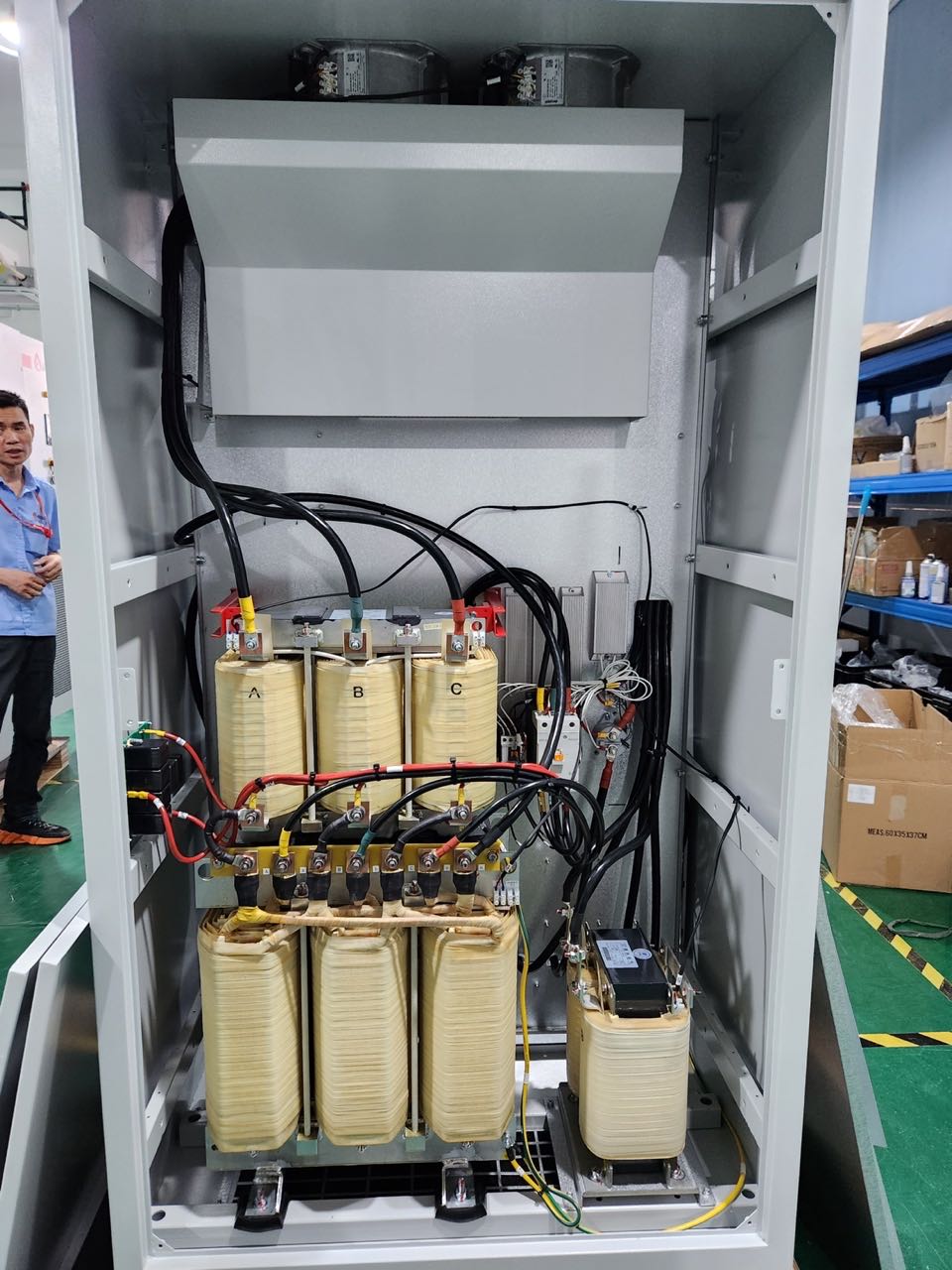What is the function of the isolation transformer in solar inverter?
- Isolation transformer is a device designed to achieve complete electrical insulation between its primary and secondary sides, effectively isolating the circuit. It prevents direct electrical continuity between the input and output, enhancing safety and protecting both equipment and individuals.
- 1. Isolation Function: The inverter operates by inverting through IGBT power devices, which generate a significant amount of third harmonic and its multiples. These harmonics pose a serious threat to grid pollution. By incorporating an isolation transformer (primary winding in delta connection, secondary winding in star connection), the third harmonic and its multiples can be effectively filtered out. When high-order harmonic currents pass through the primary winding of the isolation transformer, a large inductive reactance is generated in the winding. As a result, the ripple current becomes very small, ensuring that harmonic currents on the secondary side of the isolation transformer are minimized and providing a clean power source for the load.
- 2. Increased Short Circuit Impedance: In the event of a short circuit fault on the load side, the existence of impedance in the secondary winding of the isolation transformer significantly reduces the short-circuit current. This reduction helps minimize the impact and damage caused by short-circuit currents on the inverter.
- 3. Providing Neutral Point for Output Power: As the three-phase AC power output by the inverter lacks a neutral point, installing an isolation transformer on the output side is necessary to obtain a neutral point and achieve a 220V AC power source.
- 4. Complete electrical insulation between the primary and secondary sides, thereby isolating the circuit. Additionally, it takes advantage of the high-frequency loss characteristics of its core to suppress the transmission of high-frequency interference into the control circuit. Isolation transformers are used to float the secondary side with respect to ground, suitable for scenarios with a limited power supply range and short line lengths. In such cases, the system's ground capacitance current is insufficient to cause harm to individuals.
- 5. The primary function of an isolation transformer is to provide electrical isolation, serving both equipment protection and, importantly, personal safety. It isolates hazardous voltages, with the small capacitance coupling between the input and output of the isolation transformer having a suppressive effect on disturbances caused by lightning, discharges, grid switching, motor starts, and other grid bursts. From this perspective, isolation transformers serve as effective noise suppressors for power sources, providing equipment protection. Regarding personal safety, it ensures the protection of individuals operating the equipment. Since the electromotive force of an isolation transformer is obtained through secondary induction and does not form a circuit with the primary side (which forms a circuit with the ground), it eliminates the risk of electric shock.
Published on
tags:
{ storage inverter }
{ hybrid inverter }
{ isolation transformer }
{ 100kW inverter }
{ off grid inverter }
{ 50kW inverter }
